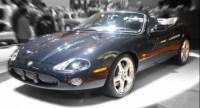|
|
pictures-of-cars.com |
cuadros de coches
|
|
|
||
Main
Editorial
Motoring Tips
Car Insurance Tips
Site Map
Events
2006 events
2007 events
New Cars
2006 cars
2007 cars
2008 cars
Car Posters
Modified-Cars
Car News
About
Pictures of Cars
NEW!
Motoring Gifts
Driving Days
Donny 2006
MPH06
Pictures
Unusual
Movie Cars
Concept Cars
By Type
Classic Cars
Exotic Cars
Supercars
Convertible Cars
Sports Cars
SUVs
Hot Cars
Cool Cars
Muscle Cars
Fast Cars
By Make
AC
Alfa Romeo
Aston Martin
Bentley
BMW
Citroen
Ferrari
Ford
Honda
Hummer
Jaguar
Lamborghini
Lexus
Maserati
Mazda
Mercedes
Mini
Noble
Nissan
Peugeot
Porsche
Renault
Rover
Seat
Suzuki
Subaru
Toyota
TVR
Vauxhall
Volkswagen
Specials
Porsche 911
Porsche Boxster
Reviews
Lexus IS200/IS300
Porsche Boxster
Toyota MR2
Bikes
Specifications New
Convertibles
Coupes
Estates
Hot Hatches
Small MPVs
Sports Convertibles
SuperCars
SuperMinis
SUVs
Race Cars
Nascar Cars
Race Cars
Rally Cars
Features
Download
Upload
Bits
Car Engines
Alloy Wheels
Misc
about
contact
Car Links
Cars Cars Cars
|
|
Information
Speed Cameras
Archive
Gallery-Pictures
2005 events
Max Power 2005
2004 events
2004 cars
Cars of 2003
Driving Games
Porsche Pages
Porsche Cars
Porsche SUVs
Info&Pics
Porsche Carrera GT
Porsche Carrera RS
Reviews
Porsche Boxster
Porsche Links
Boxster Links
Porsche Boxster
BoXa.NeT
UK Car Finance
Porsche Boxster S
... Continued
But it wasn't made for sitting on the drive, so engage first gear and set off to find out how it goes. Immediately you notice the weight of the controls - the clutch takes a little more pressure than most cars, and the steering requires some effort because the power steering is set at a level that allows you to feel the feedback from the road. When it's time to brake the pedal needs a firm press, despite the large six pot red calipers and drilled disks fitted all round on our S. The gear lever is tactile, and requires some pressure to move it from point to point. But it's precise so there's no worry of selecting the wrong cog, even on the six speed box. The travel is quite long on the standard car, and we found that some drivers didn't actually move the lever back far enough when making a lazy shift from first to second, resulting in horrible screams from the rear mounted gearbox. It's no surprise that many owners fit short shifters on the box, and somewhat of a surprise that such a feature isn't standard; the brilliant move of turning round the 911 layout to put the engine's weight in the centre of the car unfortunately means that the gearbox is right at the back of the vehicle, some distance from the gear lever. There's no doubt this has a negative effect on the selection process.
But we digress. As we move on to the open, road second gear is quickly selected (without incident) and as we press the accelerator hard, the car literally surges up to 70 mph which it reaches just before the redline in second. You can feel the push in your back, hear the exhaust note increase to a rage, and watch the scenery rush past. Breathtaking. In third gear its a similar story, and there are three more gears to go. By this point the driver's got a huge grin and is just loving the whole experience - the quality surroundings, the feel from the road that's coming back through the wheel and the seat, and the sounds that are emanating from the rear of the vehicle. Third gear is in fact the optimum one for most open road conditions. The Boxster S's big 3.2 litre engine has enough torque and flexibility to perform well in third at any speed between 30 and 90, so we find ourselves only changing down for tight low speed corners, or going up to fourth on long straights; fifth and sixth gears are reserved purely for motorway work, where the longest gear will let you cruise all day long at legal speeds, with the engine simply ticking over at about 3000rpm.
For many the ultimate thrill of the Boxster is its unbelievable handling. Many Porsche experts are beginning to admit, as we have suspected for some time, that the Boxster is actually the best handling car in the current range (leaving aside the new £250,000 Carrera GT of course). The mid engine gives it a balance that 911s don't quite have; The Boxster loses out on the launch from the line, because they don't have so much power, and they're not quite so they're not quite so planted on the rear end. But they make up for all this by having a sublime balance through corners. The 911 has more ability to power out of bends, with the back end sitting down to the road for maximum power delivery, but the Boxster somehow feels more manageable at the limit. Of course there's no way the Boxster is a 911 beater and we'd be crazy to pretend that it was; even the bottom of the current 911 range has a lot more power than the Boxster S and the top end 911 twin turbo has almost twice as much. But you would never convince us that the Boxster isn't just as much fun on the public roads as the fastest 911 you can buy. (Though we will admit that on the track it's a different story).
Backing up the sublime handling provided by the stiff chassis and fine 17" alloy wheels fitted to our S, we had the optional PSM or Porsche Stability Management system. We say optional, only because you have to pay another £700 notes to get it; for most drivers it's not an option, it's an automatic choice - they haven't paid the best part of £40,000 (or £50,000 or more if they've gone mad with the options list) just to risk putting their pride and joy backwards through a hedge. In an age where many budget cars, costing less than half the price of the Boxster, are coming with traction control or even stability control as standard, the price seems high. And many object to having their driving experience controlled by a computer. But PSM is different to most systems on the market. Its traction control allows a limited amount of wheel spin before it kicks in, and the active yaw control allows large a degree of movement before taking corrective action. You can therefore get a bit of fun from the Boxster without any electronic intervention. In fact, if you're a smooth driver, you're unlikely to ever use your PSM on the road, but it's ever so nice to know that it's there, just in case. Without question we recommend you get this 'option'. It's virtually impossible to retrofit, though we have seen people quoting £4,000 for that operation - frankly its cheaper to trade in if you don't get it and then decide that you needed it. Don't expect it to resolve any situation of course - it's only a computer that can cleverly brake one of the wheels, and take over the electronic throttle when it spots you have gone ever so slightly over the edge; there are limits to what it can do, so it's still possible to lose the car when the unexpected happens. But for many minor lapses of judgement, where you've gone just that little bit beyond the mechanical limits of the car, it's the best value option on any Porsche ever.
More UK Porsche LINKS
New and Used Porsche Cars
Porsche Insurance
Great Deals on Car Insurance for Porsches
Car Finance
Check out these car finance deals and save money on the cost of your new or used Porsche
Tyres
Get great online deals for Tyres for your Porsche
Other Porsche Sites
Porsche Breakdown Cover
Roadside recovery plans from only £33. Save £10 when you buy online.
Vehicle Warranty
Check out the price of a comprehensive vehicle warranty for your
Porsche car.
Get the peace of mind of a good warranty provides at an affordable price.
|
1 2 3
|
|
info@pictures-of-cars.com |









